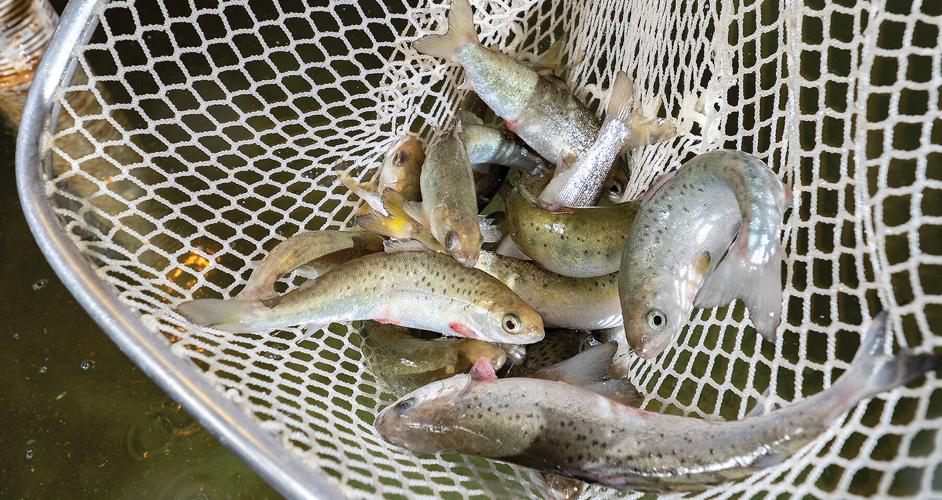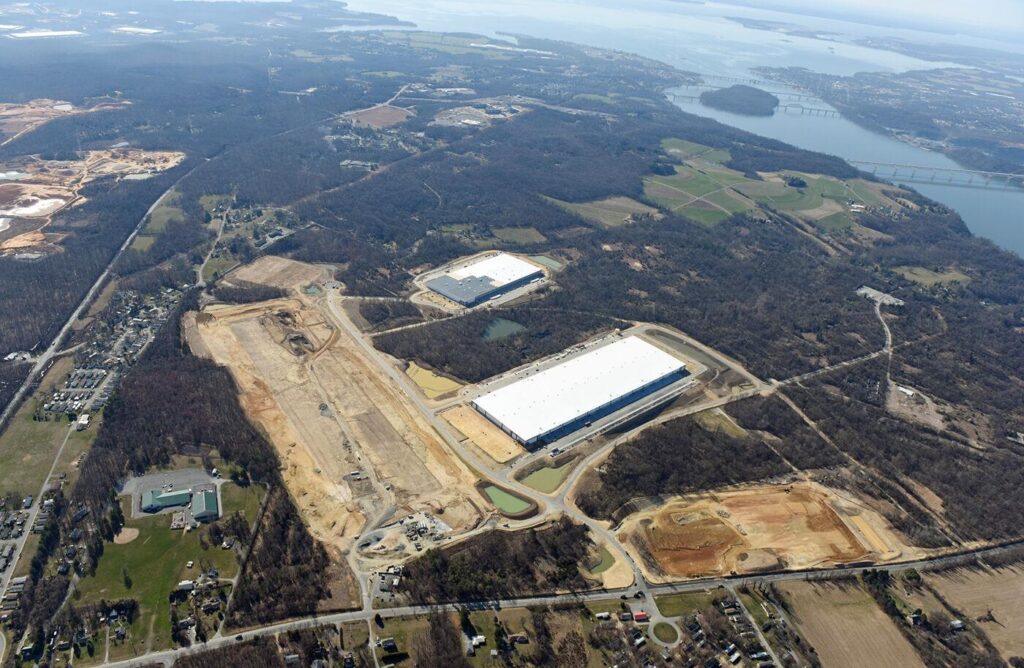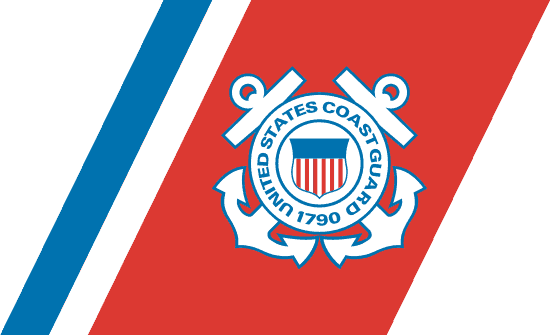Two years after abandoning controversial plans for a large indoor salmon farm on Maryland’s Eastern Shore, a Norwegian aquaculture company is back with a new proposed location that it hopes avoids environmental concerns.
AquaCon Maryland LLC is planning to build its $320 million facility on the lower Susquehanna River. The company has obtained an option on 160 acres at a former naval training center in Port Deposit, Maryland, that is being redeveloped as an industrial park.
Henrik Tangen, AquaCon’s executive chairman, said by email that the company is working with local officials to evaluate the suitability of the property for a land-based fish farm. Key needs, such as access to water, wastewater treatment and highways all look “very positive,” he added.
Tangen said the company is finalizing the project’s design and pursuing needed permits, with plans to begin construction by the first half of 2025 and to harvest its first crop of salmon in 2028. The facility would be built in two phases, producing up to 10 million tons of Atlantic salmon annually to start. AquaCon ultimately aims to employ about 300 people producing 20 million tons of fish each year.

Most of the salmon consumed in the U.S. is farmed, with the fish often spending part of their lives in underwater cages or pens. Such operations have drawn fire for their environmental impacts, including pollution produced by large quantities of fish feces and uneaten food released into surrounding water.
AquaCon says its salmon will be produced sustainably on land with a “recirculating aquaculture system.” Hatchery spawned fish would be raised in 172 tanks under one sprawling roof, with the waste generated by the fish treated and used to generate energy to help run the operation.
Even so, the Norwegian company stirred a furor after it chose a site for its indoor salmon farm in Federalsburg, Caroline County, on Maryland’s Eastern Shore. While most of the water used would be recycled, the facility still would have discharged about two million gallons of “purge water” daily into Marshyhope Creek, the only Chesapeake Bay tributary in Maryland where endangered Atlantic sturgeon are known to spawn.
Purge water comes from tanks where fully grown salmon are briefly held before being shipped to market. While free of fish waste, the water would contain geosmin, a naturally occurring organic compound that, while harmless to consume, can give farmed fish an earthy odor.
The project drew mounting pushback from scientists, environmentalists and local residents worried about the operation’s potential impact on the creek and its fish, particularly sturgeon. Experts expressed concerns about elevating levels of geosmin in fish in the creek, and they also worried that the groundwater that would have been used in the purge tanks could lower the creek’s water temperature when discharged, potentially affecting sturgeon spawning.
Though the Maryland Department of the Environment preliminarily approved AquaCon’s discharge permit, the company responded to concerns by withdrawing its permit application in 2022. The company’s lawyer said it intended to look for alternatives to discharging year-round into the Marshyhope.
AquaCon is the first potential tenant at the 1,200-acre site of the former naval training center in Cecil County, said Toni Sprenkle, executive director of the Bainbridge Development Corp. The Norwegian company’s executives had visited and considered building there several years ago when originally shopping for sites in Maryland, she said. But the Bainbridge complex had not proceeded far enough in its conversion from a military facility to accommodate the company at that time, she added.
The new location drew a thumbs-up from Dave Secor, a fisheries ecologist with the University of Maryland Center for Environmental Science. He had been outspoken in warning about the risks of building the salmon farm along the Marshyhope.
“Dilution of the discharge is the ultimate mitigation against ecological risk for AquaCon,” Secor said by email. The salmon operation’s proposed discharge of 1.9 million gallons a day would have constituted up to 25% of the Marshyhope’s flow, he said, which is why he and others worried about how that could affect sturgeon and other fish there.
The Susquehanna is a much larger water body with a flow many times greater, averaging 18 million gallons a minute at its mouth in Havre de Grace, according to the U.S. Geological Survey. The salmon facility’s discharge at Port Deposit would be diluted by more than 1,000-fold, Secor estimated.
“Now that the siting has been appropriately considered,” Secor said, “the promise of a sustainable and domestic supply of seafood would seem important to support within the state.”
Other critics of AquaCon’s earlier location are not yet ready to endorse the new one. Alan Girard, Maryland advocacy director for the Chesapeake Bay Foundation, said the environmental nonprofit is still gathering information about AquaCon’s plans.
While the foundation has not taken a position yet on the project, Girard said, “A lot of the same questions come up,” such as how stormwater runoff would be controlled from the site and whether the company would need to offset any nutrient pollution in its discharge.
Plans for the new location appear to be similar, with one key difference. AquaCon intends to get most of the water for its operation from the Susquehanna rather than from groundwater. Tangen, the company’s chairman, said the water would need to be purified to raise salmon but that the discharge would go back to the river cleaner than when it was withdrawn.
Unlike Marshyhope Creek, the Susquehanna River is not classified as critical habitat for Atlantic sturgeon. But Steve Lay, a Harford County waterman, said they still turn up in the upper Bay and its tributaries.
“When I was a kid, sturgeons were common here,” he said. “They’re still here. I caught one in the last five years.”
Lay, who is chair of the Maryland Department of Natural Resources tidal fisheries advisory committee, noted that the lower Susquehanna also draws spawning American shad and river herring. He said he’d like to know if the salmon facility’s discharge could disrupt those or other native fish species.
This story first appeared on Sept. 4, 2024, at bayjournal.com.



